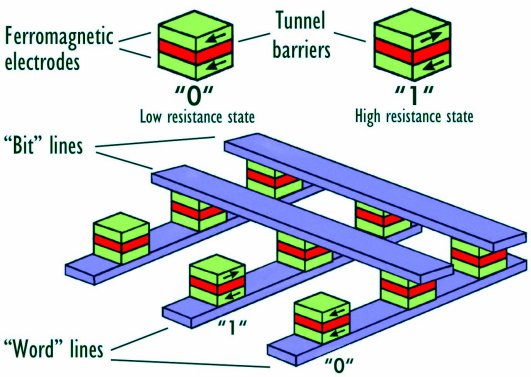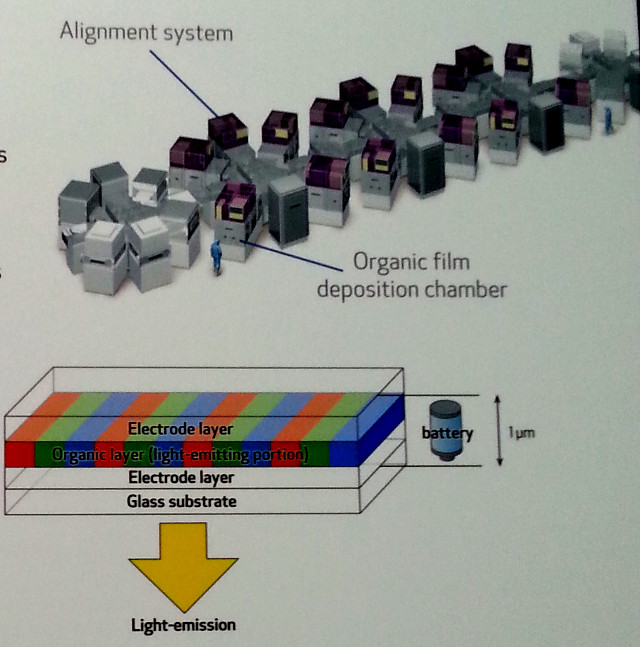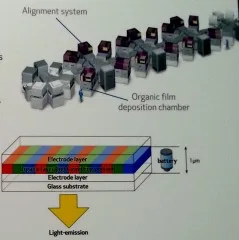M-RAM stands for Magnetoresistive Random Access Memory. It is non-volatile memory, like Flash memory and uses magnetic elements like hard drives. Now, after 20 years of development, the first products are coming to market.
Canon does not make the memory – they make the equipment to manufacture the memory. Companies like Arizon and Everspin offer the memory chips. They are not big memories at this point – 256 MB is state of the art, but there are plans to increase the density of course.
The big advantage of M-RAM is that it is non-volatile so it retains the information without power applied. D-RAM is volatile so loses information once power is removed. It is also better than other non-volatile CMOS based memories since they tend to lose bits over time. M-RAM, will retain the data for 20 years a Canon rep told us.

As shown in the schematic, two ferromagnetic layers are stacked with an insulation layer in between. A series of perpendicular “word” and bit” lines are used to change the magnetic direction at each bit point. When oriented in the same direction, a “0” is form and when opposed, a “1” is realized.
These are very thin, nanometer scale layers are needed here, which is where the Canon fabrication equipment comes in. The company claims to own about 95% of the M-RAM equipment fabrication market with every major memory maker developing this technology.
The other interesting process equipment that Canon offers is a cluster tool for the fabrication of OLED displays. This is a shadow mask tool that can deposit white, red, green or blue OLED materials. Canon claims to have a 70% market share for such tools.


